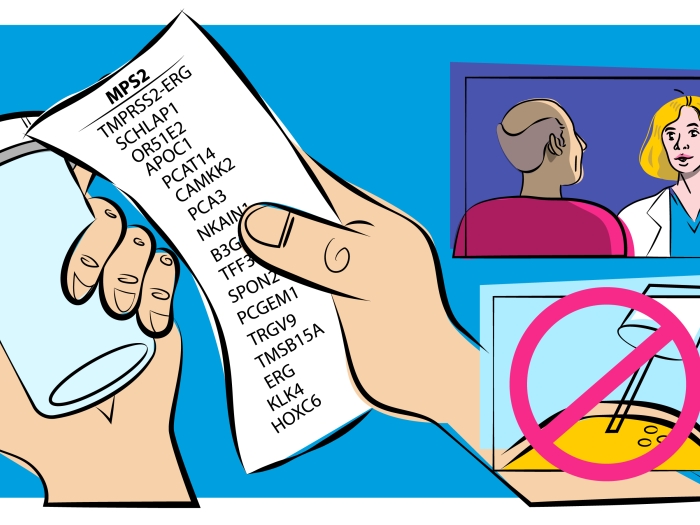Author |
- Estimates from the report suggest 1.1 billion people were living with untreated vision impairment in 2020, and this is expected to grow to 1.8 billion by 2050. Yet over 90% of vision loss could be prevented or treated with existing, highly cost-effective interventions.
- New estimates indicate that addressing preventable sight loss could bring global economic benefits of US$411 billion a year, and is essential to achieving the UN’s Sustainable Development Goals, including reducing poverty and inequality, and improving education and access to work.
- To help achieve immediate and substantial benefits for societies and people living with vision impairment, expert authors call on governments to include eye health in broader health care planning and financing, harness new technology to improve diagnosis and treatment, and expand the eye health workforce, so that everyone can access high-quality eye care.
Addressing avoidable vision loss with existing, highly cost-effective treatments, and improving inclusion of people living with permanent vision loss in society, offers enormous potential to improve the economic outlook of individuals and nations, and to contribute to a healthier, safer, more equitable world, according to a new Commission report on Global Eye Health published in The Lancet Global Health journal.
Without additional investment in global eye health, new estimates reveal that 1.8 billion people are expected to be living with untreated vision loss by 2050. The vast majority of these (90%) reside in low- and middle-income countries (LMICs), with the greatest proportion occurring in Asia and sub-Saharan Africa.
The Commission, authored by 73 leading experts from 25 countries, calls for eye care to be included in mainstream health services and development policies, arguing that it is essential to achieving universal health coverage and the 2030 UN Sustainable Development Goals (SDGs).
“As the world’s population ages, the number of people with vision loss will continue to grow. The high prevalence of vision impairment represents a tangible opportunity to improve public health and wellbeing since an estimated 4 out of 5 cases of poor vision are avoidable – and most are correctable with simple low-cost interventions” says Commission co-author Joshua Ehrlich, M.D., M.P.H an assistant professor of ophthalmology and visual sciences at the University of Michigan.
Building on the foundation laid by WHO and partners in VISION 2020, and the recent WHO World Report on Vision, this Commission synthesises the latest evidence with new epidemiological and economic analyses to demonstrate that—with the right tools, strategies, and sufficient funding—improving eye health has immediate and substantial benefits for economic and social prosperity for individuals and nations.
“It is unacceptable that more than a billion people worldwide are needlessly living with treatable vision impairment”, says Professor Matthew Burton, co-chair of The Lancet Commission and director of the International Centre for Eye Health at The London School of Hygiene & Tropical Medicine, UK. “Vision impairment leads to detrimental effects for health, wellbeing, and economic development including reduced education and employment opportunities, social isolation, and shorter life expectancy. As the COVID-19 pandemic brings renewed emphasis on building resilient and responsive health systems, eye health must take its rightful place within the mainstream health agenda and global development.”
Global magnitude of eye disease and sight loss
Recent decades have seen substantial progress in eye health, including against the major infectious causes of blindness (onchocerciasis and trachoma), resulting in global rates of blindness and vision impairment in all ages declining by around 29% between 1990 and 2020. However, this progress hangs in the balance. The continuously expanding and ageing global population together with lifestyle changes (e.g., physical inactivity and poor diet) are driving worldwide increases in chronic eye diseases associated with ageing.
In 2020, an estimated 596 million people worldwide were living with an untreated ‘distance vision impairment’ (such as cataract, glaucoma, or diabetes-related eye complications), of whom 43 million people were blind. A further 510 million were unable to see near objects simply due to a lack of glasses. There are many more people who have ongoing eye care needs such as those with diabetes who need regular eye checks.
If decisive action is not taken, by 2050 the number of people with distance vision impairment is expected to rise to 895 million, including 61 million people living with blindness. In addition, 866 million are expected to have unaddressed presbyopia (the inability to focus on nearby objects).
Unlocking human potential
New analysis done by the Commission authors reveals that enhancing eye health is essential to achieving many of the SDGs—contributing to improvements in gender equality, education, employment prospects, work productivity, household income, and economic productivity.
“When we think of eye health, the socioeconomic benefits may not immediately come to mind. Treating avoidable vision impairment alongside increasing access to vision rehabilitation services and creating more inclusive environments are practical and cost-effective ways of unlocking human potential”, says Commission co-author Bonnielin Swenor, M.P.H., Ph.D., associate professor at The Johns Hopkins Wilmer Eye Institute, USA.
She continues: “Eye health and inclusive environments for people with vision loss not only impact general health and wellbeing, but also enable children to gain an education and working-age adults to get and keep a job. These factors improve equality for women and girls, who are more likely than men to have vision loss and less likely to receive treatment—transforming lives in both poor and wealthy communities. It is crucial that eye health and creating inclusive environments for people with vision loss is brought into the mainstream of national health and development policy, health workforce planning, and financing mechanisms.”
A deep inequity
Vision impairment perpetuates cycles of poverty and inequity, with 90% of cases occurring in LMICs. In 2020, rates of blindness were up to nine times higher in western sub-Saharan Africa (with 1.11% of adults affected) than in high-income North America (0.12%). Most people who are blind or have moderate to severe vision loss live in South Asia (108 million), east Asia (63 million), and southeast Asia (35 million).
The Commission also underscores the shortfall in eye healthcare workforce as a major barrier to care in LMICs—with one ophthalmologist to serve one million people in parts of sub-Saharan Africa, compared to an average of 76 ophthalmologists per million people in high-income countries.
Evidence shows that impaired vision disproportionately affects women, rural populations, and ethnic minority groups. New estimates from the report suggest that for every 100 men living with blindness or moderate to severe vision loss worldwide, there are 108 and 112 women affected, respectively. Much of this gender imbalance is determined by socioeconomic factors, such as reduced access to care.
"Business as usual will not address these inequities or keep pace with rapidly increasing and ageing populations. This is particularly true in Asia and sub-Saharan Africa, which account for over two-thirds of global cases”, says Professor Hannah Faal, Commission co-chair and professor of international eye health at the University of Calabar, Nigeria. "With urgent investment and a co-ordinated response, we have an opportunity to help create a fairer society for future generations through improved eye health.”
Improving vision beyond 2020
To develop and deliver comprehensive eye health services that are well-integrated in national health systems, are people-centred, and further the SDGs, the Commission authors call on governments to:
- Adopt a new definition of eye health which includes maximised vision, ocular health, and functional ability, and recognises its contribution to overall health, wellbeing, social inclusion, and quality of life.
- Promote the rights of people with vision impairment by creating a more inclusive society. For example, by providing rehabilitation services, assistive technology, and accessible spaces.
- Include eye health as a key component of universal health coverage; as part of the planning, resourcing, and delivery of wider health care. Key to this is strengthening eye care delivery within primary care. In Pakistan, for example, the Lady Health Worker programme uses over 100,000 community workers to deliver eye care services door-to-door.
- Eliminate cost barriers to accessing eye care by incorporating population needs into national health financing to pool risk and protect the most vulnerable.
- Improve access to quality eye care, particularly in remote areas, using technology and treatment developments in telemedicine, mobile health, and artificial intelligence. For example, in Kenya teachers are using smartphones to diagnose and refer pupils with vision loss.
- Expand the eye health workforce to meet population needs, for example by increasing the number of skilled personnel, strengthening training, and providing better equipment.
- Integrate eye health teams into the general health workforce, and train general healthcare workers in eye health.
Investing in eye health
The Commission analysed global and regional productivity losses from unaddressed vision impairment in people of working age in 2020. Analyses indicate that the economic cost of blindness and moderate to severe vision loss was US$411 billion in 2020 (equivalent to 0.3% of the world’s GDP in 2018), costing the most in east Asia (US$90 billion) and south Asia (US$70 billion).
The authors also determined that surgery for cataracts and requiring glasses account for more than 90% of unmet eye health needs, and are both highly cost-effective solutions in many settings, particularly LMICs.
“Cataract surgery and dispensing glasses are some of the most cost-effective of all health care interventions”, says Commission co-author Professor Ningli Wang, director of Beijing Tongren Eye Center, China. “By prioritising eye health through increased investment and restructuring health systems, we can provide simple, existing solutions such as these, rapidly improving lives and livelihoods worldwide. The case for countries to invest in eye health is compelling and more financial resources are urgently needed.”
This Commission was supported by grants from The Queen Elizabeth Diamond Jubilee Trust; Moorfields Eye Charity; NIHR Moorfields Biomedical Research Centre; The Wellcome Trust; Sightsavers; The Fred Hollows Foundation; SEVA Foundation; British Council for the Prevention of Blindness; and the Christian Blind Mission.

Department of Communication at Michigan Medicine





